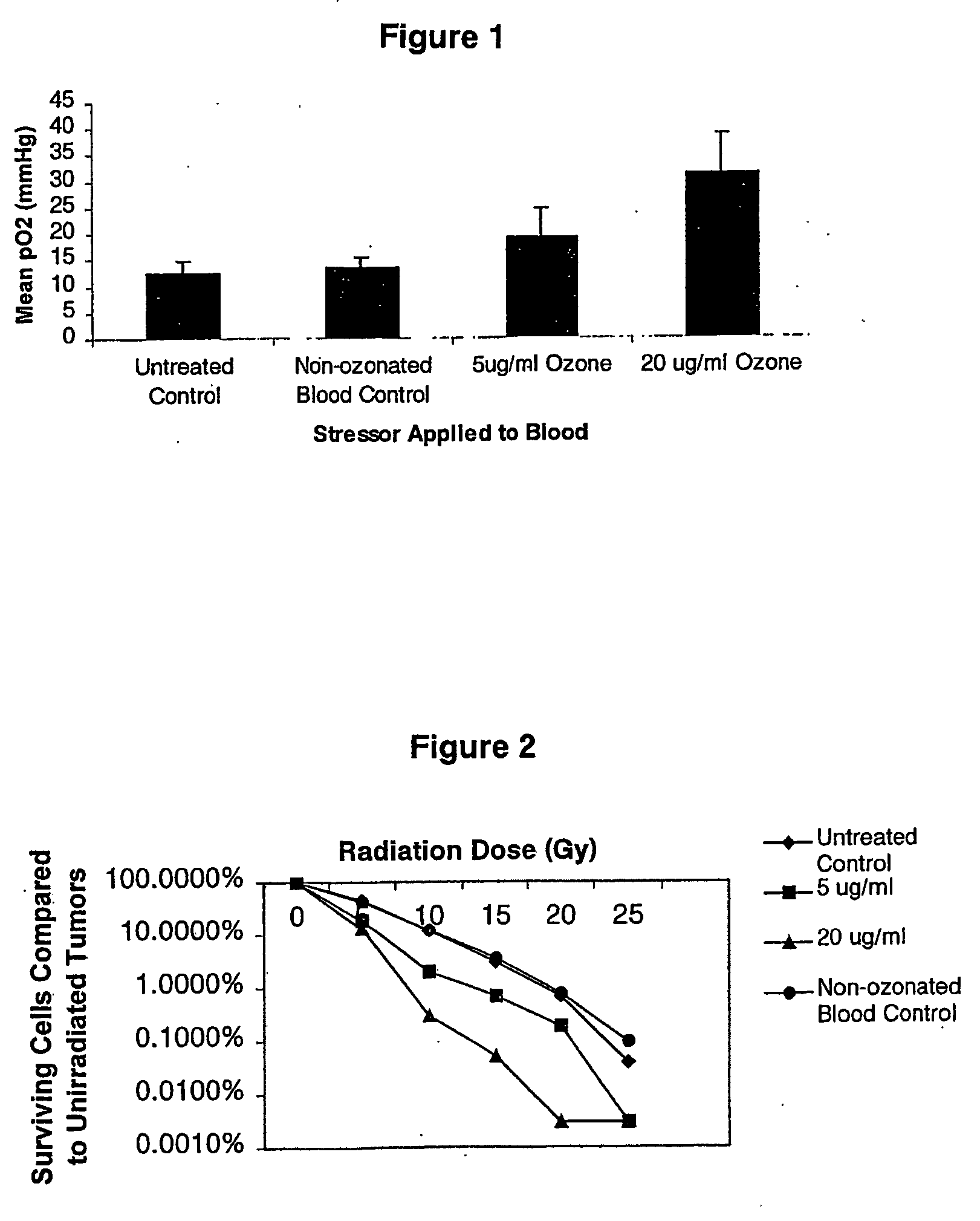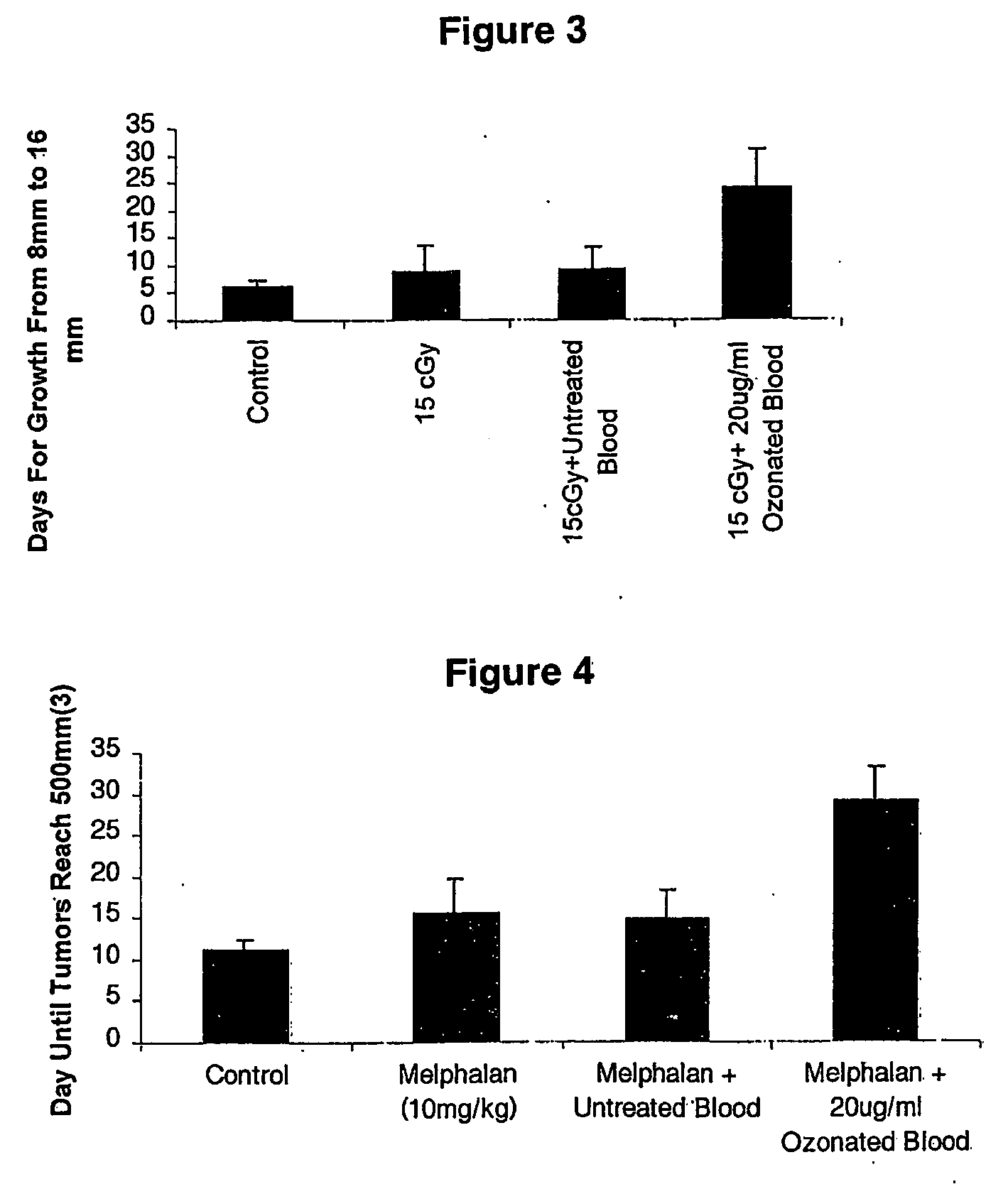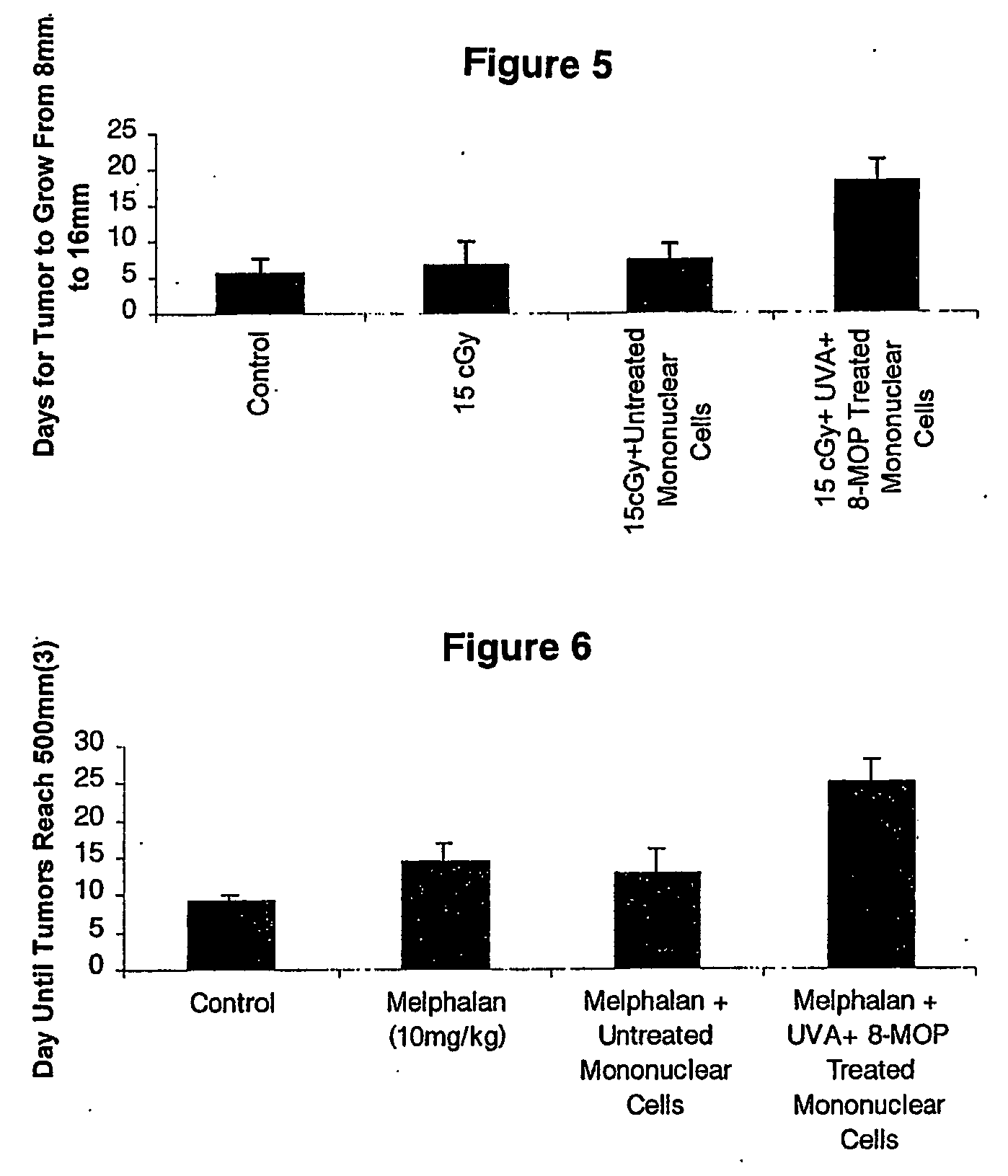Increasing tumor oxygen content by administration of stressed cells
a tumor and oxygen content technology, applied in the field of medicine, can solve the problems of hyperbaric oxygen, high interstitial fluid pressure, rapid expansion, etc., and achieve the effect of increasing the therapeutic index of oxygen-dependent treatment modalities and increasing the tumor oxygen conten
- Summary
- Abstract
- Description
- Claims
- Application Information
AI Technical Summary
Benefits of technology
Problems solved by technology
Method used
Image
Examples
example i
Reduction of Hypoxia in the KHT Fibrosarcoma Model by Ozone Stressed Blood
[0033] 10 ml of blood was pooled from 10 C3H mice collected by cardiac puncture in sodium citrate tubes. Cells were stressed by bubbling 5 or 20 μg of ozone per ml of oxygen at a flow rate of 220 ml / minute for 2 minutes in a sterile glass flask. As a control, blood was placed in the glass flask for 2 minutes and medical grade oxygen was bubbled through it at the same flow rate.
[0034] For evaluating the effect of stressed cells on tumor oxygenation, 9-12 week old male C3H mice were divided into groups of 10, all of which were inoculated with 2×105 KHT sarcoma cells into the left gastrocnemius muscle. Treatments were performed for 5 consecutive days starting two days after tumor cell inoculation.
[0035] Group I was given no treatment. Group II was treated with a 50 μl intramuscular injection of untreated blood. Group III was treated with a 50 μl intramuscular injection of blood treated with ozone at 5 μg / ml (...
example ii
Reduction of Tumor Clonogenicity in the KHT Fibrosarcoma Model by Ozone Stressed Blood
[0038] 9-12 week old male C3H mice were divided into groups of 10, all of which were inoculated with 2×105 KHT sarcoma cells into the left gastrocnemius muscle. Treatments were performed for 5 consecutive days starting two days after tumor cell inoculation.
[0039] Group I was given no treatment. Group II was treated with a 50 μl intramuscular injection of untreated blood. Group III was treated with a 50 μl intramuscular injection of blood treated with ozone at 5 μg / ml (described above). Group IV was treated with a 50 μl intramuscular injection of blood treated with ozone at 20 μg / ml (described above).
[0040] One day 7 post-tumor inoculation, tumors from mice in all groups were irradiated with a 137CS source at 3 Gy / min for varying time points to administer doses of 0-25 Gy. Tumors were extracted from mice and made into single cell suspensions by mechanical disassociation, and treatment with tryps...
example iii
Enhanced Inhibition of Tumor Growth by Ozone Stressed Cells
[0042] C3H mice were inoculated with KHT tumors as described above. At about day 7-8 when tumors reached 8 mm in circumference mice were divided into 4 groups of 10 mice per group. Group I was the untreated control, Group II was administered 15 cGy, Group III was administered 15cGy together with an intramuscular injection of 50 μl of untreated syngeneic blood. Group IV was injected with 50 μl of syngeneic blood treated with 20 μl ozone / ml of oxygen as described above. Injections of untreated, and treated blood were administered one hour before radiotherapy, and for 4 subsequent days. Tumor size was evaluated daily and the time until tumors reached 16 mm was recorded.
[0043] As illustrated in FIG. 3, treatment with ozone-stressed blood cells resulted in a potent prolongation of time it took for tumor growth to occur.
PUM
| Property | Measurement | Unit |
|---|---|---|
| temperature | aaaaa | aaaaa |
| temperature | aaaaa | aaaaa |
| wavelength | aaaaa | aaaaa |
Abstract
Description
Claims
Application Information
 Login to View More
Login to View More - R&D Engineer
- R&D Manager
- IP Professional
- Industry Leading Data Capabilities
- Powerful AI technology
- Patent DNA Extraction
Browse by: Latest US Patents, China's latest patents, Technical Efficacy Thesaurus, Application Domain, Technology Topic, Popular Technical Reports.
© 2024 PatSnap. All rights reserved.Legal|Privacy policy|Modern Slavery Act Transparency Statement|Sitemap|About US| Contact US: help@patsnap.com










